Thursday, April 12, 2012
StBasil 451 - A BLAZING CATHEDRAL
| The Cathedral of the Protection of Most Holy Theotokos on the Moat (Russian: Собор Покрова пресвятой Богородицы, что на Рву), popularly known as Saint Basil's Cathedral (Russian: Собор Василия Блаженного), is a Russian Orthodox church erected on the Red Square in Moscow in 1555–61. Built on the order of Ivan the Terrible to commemorate the capture of Kazan and Astrakhan, it marks the geometric centre of the city and the hub of its growth since the 14th century... [WikipediA] In this article I present a summary of information and images that most have hit my imagination, enriched with some original considerations and diagrams, and I hope that it will also be useful to the reader to know better this splendid Cathedral and its glorious history. Enrico Dalbosco (Arrigo Silva) Padova, April 12, 2012 |
Index
1. Anniversaries
2. Ramblings On Red And Fire
3. The Names Of The Cathedral
4. Basil The Blessed
5. Ivan IV The Terrible
6. Saint Basil's Cathedral At Its Foundation
7. A Fate Original And... Ex-Centric
8. Saint Basil's Cathedral Today
9. Saint Basil's Cathedral Over The Centuries
10. The Multicolored Fanciful Domes
1. Anniversaries
On July 12, 2011 was solemnly celebrated the 450th anniversary and this year marks the 451st year from the foundation of St. Basil's Cathedral.
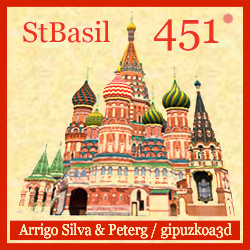 Today, April 12, 2012, marks another anniversary too, much less important but significant for the 3dwarehouse and Google Earth community: exactly four years ago, April 12, 2008, it was published the first 3D model of the Cathedral of St. Basil, that some time later (on December 11, 2009) was accepted on the Photorealistic layer of Google Earth, and that for a long time (according to opinions of several colleagues and people) was one of the highlights of the gallery and Google Earth.
Today, April 12, 2012, marks another anniversary too, much less important but significant for the 3dwarehouse and Google Earth community: exactly four years ago, April 12, 2008, it was published the first 3D model of the Cathedral of St. Basil, that some time later (on December 11, 2009) was accepted on the Photorealistic layer of Google Earth, and that for a long time (according to opinions of several colleagues and people) was one of the highlights of the gallery and Google Earth.Now in these days has been published a new blazing and flaming version, due to the masterful and passionate work of Peterg/gipuzkoa3d, which added considerable improvements to my previous version, modeling a number of significant new details and creating new high-definition sharp and well-balanced textures. I think this version - say StBasil 451° - will allow everyone (modelers and all people) to admire and, so to speak, to touch the extraordinary beauty of Saint Basil's towers, decorations and fantastic flaming domes.
2. Ramblings On Red And Fire
THE RED SQUARE
The Saint Basil's Cathedral is located in the so-called Red Square: and it is not a coincidence!
The name Red Square derives neither from the colour of the bricks around it (which, in fact, were whitewashed at certain points in history) nor from the link between the colour red and communism. Rather, the name came about because the Russian word красная (krasnaya) can mean either "red" or "beautiful" (the latter being rather archaic; cf. прекрасная, prekrasnaya). This word, with the meaning "beautiful", was originally applied to Saint Basil's Cathedral and was subsequently transferred to the nearby square. [WikipediA]
THE KREMLIN
"The existing Kremlin walls and towers were built by Italian masters over the years 1485 to 1495. The irregular triangle of the Kremlin wall encloses an area of 275,000 square metres (68 acres). Its overall length is 2235 metres (2444 yards), but the height ranges from 5 to 19 metres, depending on the terrain. The wall's thickness is between 3.5 and 6.5 metres." [WikipediA]
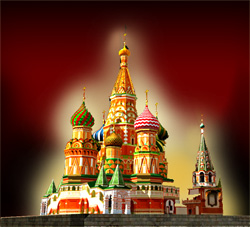 THE SHAPE OF THE BUILDING
THE SHAPE OF THE BUILDINGThe building’s design, shaped as a flame of a bonfire rising into the sky, has no analogues in Russian architecture: "It is like no other Russian building. Nothing similar can be found in the entire millennium of Byzantine tradition from the fifth to fifteenth century... a strangeness that astonishes by its unexpectedness, complexity and dazzling interleaving of the manifold details of its design." [Shvidkovsky 2007, p. 139]
THE ONION DOMES
“Prior to the eighteenth century, the Russian Orthodox Church did not assign any particular symbolism to the exterior shape of a church. Nevertheless, onion domes are popularly believed to symbolise burning candles. In 1917, noted religious philosopher Prince Yevgeny Trubetskoy argued that the onion shape of Russian church domes may not be explained rationally. According to Trubetskoy, drums crowned by tapering domes were deliberately scored to resemble candles, thus manifesting a certain aesthetic and religious attitude. Another explanation has it that the onion dome was originally regarded as a form reminiscent of the edicula (cubiculum) in the Church of the Holy Sepulchre in Jerusalem.” [WikipediA]
ABOUT FIRE
Fire is related... to the strenght and the passion, but also to war and destruction - to the family and purification, and even to imagination and creativity - Ivan the Terrible, who ordered the construction of the church, knew him well, and could use it when necessary - also Basil the Blessed, whose name is linked to the church, knew him so well, but for a more peaceful use - the same fire probably inspired the two legendary architects Barma and Postnik in conceiving a building unique in the history of architecture.
And, if I can make a digression that may seem irreverent, I think that a similar little fire also is inspiring us, poor 3D modelers, when we are going to re-create the turned fantastic domes with their amazing colorful decorations in relief, diamond, spiral...
3. The Names Of The Cathedral
The history of the Cathedral is complex and manifold, its structure and its appearance has changed showily over the centuries: even its names reflect this complexity and nor should we be surprised if these names are often changed, and if more than one still continue to coexist.
"The building, originally known as Trinity Church, was consecrated on 12 July 1561, and was subsequently elevated to the status of a sobor (similar to Roman Catholic ecclesiastical basilica, but usually and incorrectly translated as cathedral).
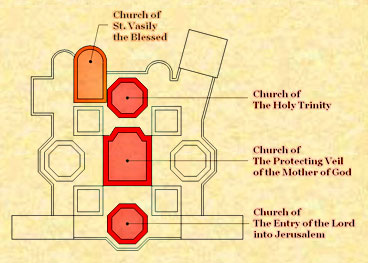 Trinity, according to tradition, refers to the easternmost sanctuary of Holy Trinity, while the central sanctuary of the church is dedicated to Intercession of Mary. Together with the westernmost sanctuary of Entry into Jerusalem, these sanctuaries form the main west–east axis (Christ, Mary, Holy Trinity), while other sanctuaries are dedicated to individual saints.
Trinity, according to tradition, refers to the easternmost sanctuary of Holy Trinity, while the central sanctuary of the church is dedicated to Intercession of Mary. Together with the westernmost sanctuary of Entry into Jerusalem, these sanctuaries form the main west–east axis (Christ, Mary, Holy Trinity), while other sanctuaries are dedicated to individual saints.The name Intercession Church came into use later, coexisting with Trinity Church. From the end of the 16th century to the end of the 17th century the cathedral was also popularly called Jerusalem, in reference to its church of Entry into Jerusalem as well as to its sacral role in religious rituals.
Finally, the name of Vasily (Basil) the Blessed, who died during construction and was buried on-site, was attached to the church in the beginning of the 17th century.
Current Russian tradition accepts two coexisting names of the church: the Church of Intercession on the Moat (full name: Church of Intercession of Most Holy Theotokos on the Moat), which is official, and the Temple of Basil the Blessed. When these names are listed together, the latter name, being informal, is always mentioned second. The common Western translations Cathedral of Basil the Blessed and Saint Basil's Cathedral incorrectly bestow the status of cathedral on the church of Basil, but are nevertheless widely used even in academic literature." [WikipediA]
4. Basil The Blessed
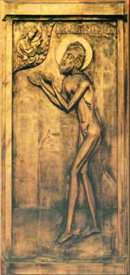 Basil the Blessed (known also as Basil, fool for Christ; Basil, Wonderworker of Moscow; or Blessed Basil of Moscow, fool for Christ Russian: Василий Блаженный, Vasily Blazhenny) is a Russian Orthodox saint of the type known as yurodivy or "holy fool for Christ".
Basil the Blessed (known also as Basil, fool for Christ; Basil, Wonderworker of Moscow; or Blessed Basil of Moscow, fool for Christ Russian: Василий Блаженный, Vasily Blazhenny) is a Russian Orthodox saint of the type known as yurodivy or "holy fool for Christ".He was born to serfs in December of 1468 or 1469 in Yelokhovo, near Moscow (now in Moscow). His father was named Jacob and his mother Anna. According to tradition, he was born on the portico of the local church. He is thought to have died in 1552.
Originally an apprentice shoemaker in Moscow, he adopted an eccentric lifestyle of shoplifting and giving to the poor to shame the miserly and help those in need.
He went naked and weighed himself down with chains. He rebuked Ivan the Terrible for not paying attention in church, and for his violent behaviour towards the innocent.
When he died on August 2, 1552 or 1557, St. Macarius, Metropolitan of Moscow, served his funeral with many clergy. Ivan the Terrible himself acted as pallbearer and carried his coffin to the cemetery. He is buried in St. Basil's Cathedral in Moscow, which was commissioned by Ivan and is named after the saint. Basil was formally canonised around 1580. His feast day is celebrated on August 2 (August 15, N.S.). [WikipediA]
5. Ivan IV The Terrible
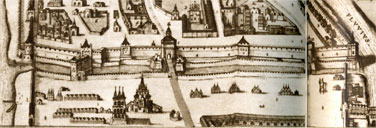
The Red Square around the middle of the XVII century
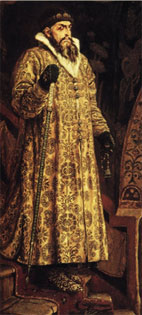 The history of our Cathedral began in mid-sixteenth century under the rule of Ivan IV Vasilyevich, aka as Ivan the Terrible (1530-1584).
The history of our Cathedral began in mid-sixteenth century under the rule of Ivan IV Vasilyevich, aka as Ivan the Terrible (1530-1584).“The Grand Prince of Moscow crowned Tsar of All the Russias in 1547, used to mark every victory of the Russo-Kazan War by erecting a wooden memorial church next to the walls of Trinity Church, a Church located between the St. Frol's (later Saviour's) Gate of the Moscow Kremlin and the outlying posad.
By the end of his Astrakhan campaign it was literally shrouded within a cluster of seven wooden churches”.
In 1555 Ivan IV ordered construction of a new stone cathedral on the site of Trinity Church that would commemorate his campaigns. [WikipediA]
6. Saint Basil's Cathedral At Its Foundation
The tradition held that the church was built by two architects, Barma and Postnik, and the legend says that Ivan had them blinded so that they could not re-create the masterpiece elsewhere... (were they blinded with the fire!?)
Instead of literally following the original ad hoc layout (the seven wooden memorial churches around the central core), Ivan's architects opted for a symmetrical floor plan with eight side churches around the core, producing a thoroughly coherent, logical plan despite the erroneous latter notion of a structure devoid of restraint or reason influenced by the memory of Ivan's irrational atrocities.
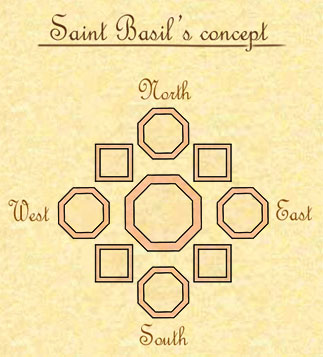 |
The guiding principle is so extraordinarily rational, the more so that the four main churches are octagonal and are placed according to the four cardinal points, while the four intermediate churches are located in the four middle points and have a square plant.
In addition, the four churches located at the cardinal points were designed to be tall, albeit less tall than the central one, while the intermediate ones would have been smaller.
An initial letdown: white, not coloured!
There are no precise verbal or iconographic descriptions of the cathedral at the time of its origins, but its appearance would be very different from today:
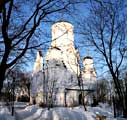
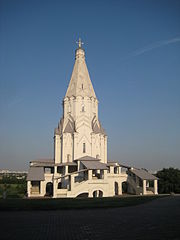 "The church combines the staggered layered design of the earliest (1505–08) part of the Ivan the Great Bell Tower, the central tent of the Church of Ascension in Kolomenskoye (1530s) [see photo on the left], and the cylindric shape of the Church of Beheading of John the Baptist in Dyakovo (1547) [see photo on the right], but the origin of these unique buildings is equally debated."
"The church combines the staggered layered design of the earliest (1505–08) part of the Ivan the Great Bell Tower, the central tent of the Church of Ascension in Kolomenskoye (1530s) [see photo on the left], and the cylindric shape of the Church of Beheading of John the Baptist in Dyakovo (1547) [see photo on the right], but the origin of these unique buildings is equally debated."
[WikipediA]
 And even more, (another disappointment!) all the domes, although present, probably did not had the characteristic onion shape and were not decorated with varied bright colors... but they had a helmet shape (a hemisphere more or less flattened) and a single monotone color.
And even more, (another disappointment!) all the domes, although present, probably did not had the characteristic onion shape and were not decorated with varied bright colors... but they had a helmet shape (a hemisphere more or less flattened) and a single monotone color.
There are no precise verbal or iconographic descriptions of the cathedral at the time of its origins, but its appearance would be very different from today:

 "The church combines the staggered layered design of the earliest (1505–08) part of the Ivan the Great Bell Tower, the central tent of the Church of Ascension in Kolomenskoye (1530s) [see photo on the left], and the cylindric shape of the Church of Beheading of John the Baptist in Dyakovo (1547) [see photo on the right], but the origin of these unique buildings is equally debated."
"The church combines the staggered layered design of the earliest (1505–08) part of the Ivan the Great Bell Tower, the central tent of the Church of Ascension in Kolomenskoye (1530s) [see photo on the left], and the cylindric shape of the Church of Beheading of John the Baptist in Dyakovo (1547) [see photo on the right], but the origin of these unique buildings is equally debated."[WikipediA]
 And even more, (another disappointment!) all the domes, although present, probably did not had the characteristic onion shape and were not decorated with varied bright colors... but they had a helmet shape (a hemisphere more or less flattened) and a single monotone color.
And even more, (another disappointment!) all the domes, although present, probably did not had the characteristic onion shape and were not decorated with varied bright colors... but they had a helmet shape (a hemisphere more or less flattened) and a single monotone color.7. A Fate Original And... ...Ex Centric
Centric
 Centric
Centric...a rather personal vision...
And here we are at what seems to me the central point, the heart of this article about Saint Basil's Cathedral: its originality, its uniqueness and its ex-centricity.
And here we are at what seems to me the central point, the heart of this article about Saint Basil's Cathedral: its originality, its uniqueness and its ex-centricity.
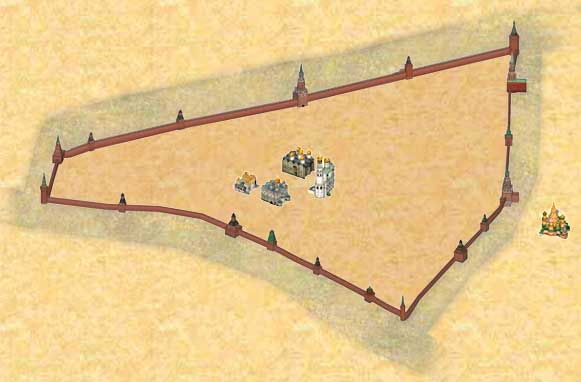
SAINT BASIL'S UNIQUENESS AND ECCENTRICITY
I think that St. Basil's originality and uniqueness is due to the following factors:
- the purpose for which it was intended
the Cathedral really did not emerge as a 'normal' church but rather as a collection of churches, a special place where are concentrated more devotions; - the particular place where it was built
the Cathedral is built in a large open space full of exchanges and moods just outside the Kremlin; - a choral and on-going design
the actual architect of the Cathedral was not an architect 'man' who originally conceived it, but rather a 'collective' architect, 'evoked' by the people who frequented those sacred place to show their devotion.
INSIDE/OUTSIDE THE KREMLIN
The ancient map shown below represents the city of Moscow as it appeared in the second half of the sixteenth century. The elements that are more interesting for us are the so-called Cathedral Square, in the heart of the Kremlin, and just outside the town walls and moat, in a large open space which will become the Red Square, a Church - a group of Churches - at that time known as Trinity Church.
You can find more information about this ancient and sumptuous map, and admire it in high resolution, on the following sites: www.sanderusmaps.com e en.wikipedia.org
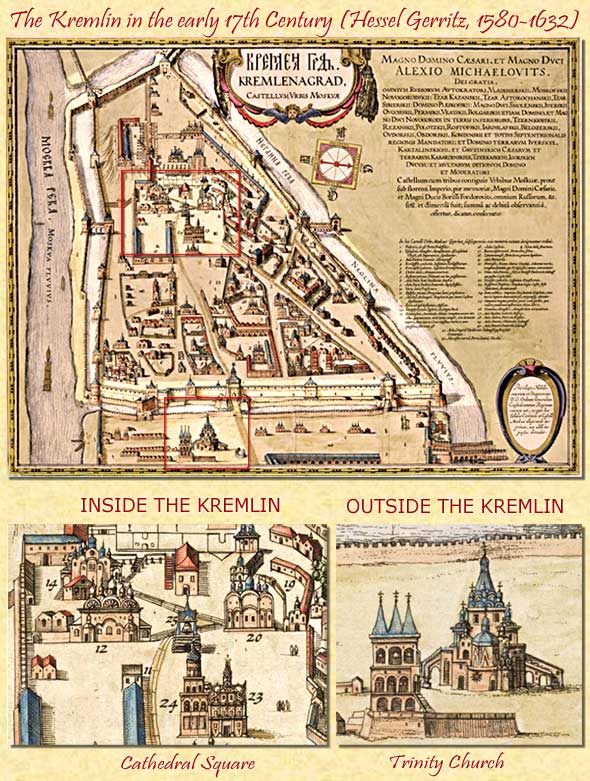
It 's interesting to note that the three main Cathedrals in the Cathedral Square were already built - at the date of the engraving, around 1600 - from nearly two centuries (eg the Dormition Cathedral was consecrated in 1479), while "our" Trinity Church was much more recent, having been consecrated in 1561.
WHERE ARE THE MAJOR DIFFERENCES?
But now let us closer consider how to these four major churches looked at that time (around 1600) in order to discover the differences, large or small, with their current appearance.
INSIDE - PLAY THEM!
click on the highlighted areas to see how look the ACTUAL Churches!
OUTSIDE - PLAY IT!
click on the highlighted area to see how looks the ACTUAL Church!
Already at first glance, you notice that the Cathedral inside the Kremlin remained frozen almost unchanged, while St. Basil has undergone great changes and developments. Why?
AN ATTRACTIVE EXPLANATION
An attractive explanation that I venture to give is the following:
- the inside Cathedrals had a strong function that we might say institutional: in the Dormition Cathedral were crowned Russian Tzars, in the Archagel Michael they were buried, and the Annunciation - given its proximity to the Tsar's residences - was considered almost a private chapel; therefore, being closer to the central power, their changes were rather conservative, improving the internal appearance (with paintings and ornaments) and also the external (eg the domes, which became larger and more valuable), but their shape did not undergo considerable changes;
- the outside Cathedral, conversely, was less tied to the established power, to its continuity and conservatism - and found itself almost in competition with the internal ones; competition that could deal with a higher degree of freedom, since even the open space which had been placed and its function of devotional Sanctuary: it was so that its structure could grow (with the arcades, opposite to the walls of the Kremlin), with the surgery that surrounds it, with the bell tower that was built more near... and finally with the proliferation of brick friezes and multi-colored multi-relieved domes - the invention that constituted his most daring innovation!

TWO EXCINTING CONTRADICTIONS
And finally let me expose two "contradictions" that I find make even more interesting the Saint Bails's Cathedral:
- the center contradiction: St. Basil has grown around a center, but St. Basil is a building that has always remained outside the center... and now it is considered the center of Moscow!
- the symmetry contradiction: St. Basil was thrown under the symmetry, but its beauty is due to numerous more or less remarkable asymmetries.
About the asymmetries, the Cathedral is a case virtually unique in the world, at least for the "ancient" monuments: at least in European art, including up to XIX Century, you can say that there is no other monument so full of "exceptions" to the regularity and symmetry: in addition to the presence of the porches, the present of a tenth "added after" Church (just dedicated to Saint Basil) and the bell-tower (differently oriented with respect to the central body), that create the two most significant "imbalances", we can note that the locations of the central, intermediate and little towers is not exactly symmetric, and there are also remarkable differences and asymmetries in their widths and heights, and in the sizes shapes proportions and colors of the domes...
All these differences and asymmetries create in the viewer wich comes close to the Cathedral, and wich turns around it (or, as it is now possible, "over" it) many views ever different to each other, varied and,one might almost say, unpredictable - but nevertheless they supply an impression of beauty, grandeur, endless creativity...
I want to end this section with a very personal anecdote: when I was a child a poor monk of a shrine gave me a simple cardboard tube coated with a sweet image of Our Lady, containing three mirrors and a few colorful pieces of glass... How long I have to look into that extraordinary handiwork! Here: every time I've seen, and every time I see St. Basil's Cathedral, I can not forget the monk, the popular devotion, the kaleidoscope and its magical and ever-changing visions.
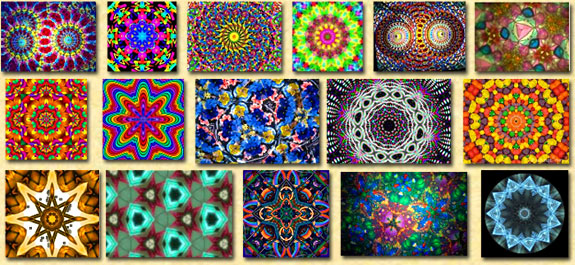
8. Saint Basil's Cathedral Today
As we shall see in a later section, the Cathedral has undergone over the centuries many changes, additions, renovations and restorations.
If the legendary Barma and Postnik could see their Church(s) today, perhaps they don't immediately recognize their creature - even if they would still be proud of its... progress!
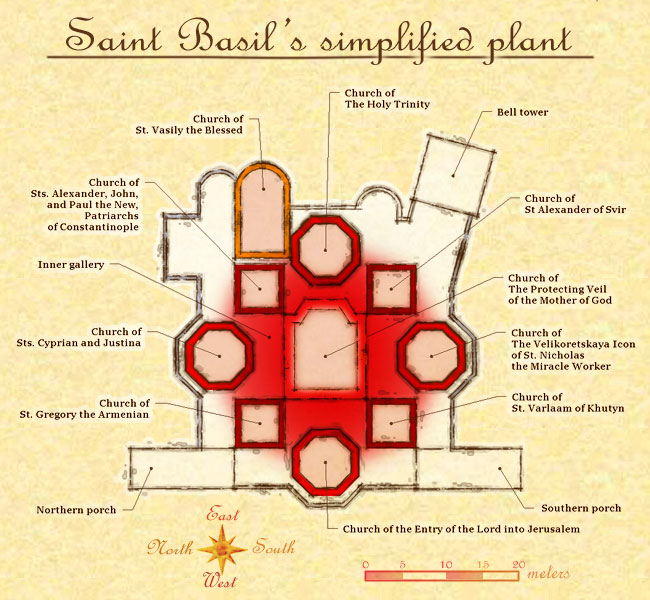 |
As you can see from the above simplified diagram, the layout and architecture of the building are particularly complex and articulated - and much more irregular than the diagram shows! To the complexity of the plant we must also add the articulation and the variety of volumes, cavities, lights... not to mention the decor, the sacred icons and furnishings that enliven and enrich the interior space.
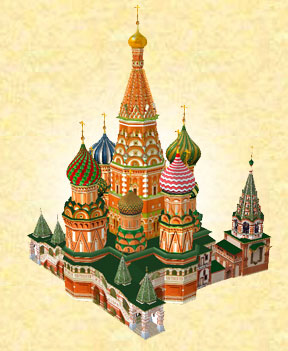 Inside the composite church is a fascinating and variegated labyrinth of narrow vaulted corridors and vertical cylinders of the churches. The largest, central church of the Intercession is 46 metres tall internally but has a floor area of only 64 square metres.
Inside the composite church is a fascinating and variegated labyrinth of narrow vaulted corridors and vertical cylinders of the churches. The largest, central church of the Intercession is 46 metres tall internally but has a floor area of only 64 square metres.The Church is built on two levels: a ground floor and an upper elevated floor - see detailed diagrams and more information at www.saintbasil.ru.
The churches that make up the Cathedral are located in the heart of the building on the upper floor, are all in communication with each other through corridors. Around this core there is a coating in wich is located an outer roundabout gallery that allows you to turn all around the complex of the churches. The access to this gallery is allowed two solemn main entrances, the Northern and the Southern Porch.
Further enliven the building a Bell Tower, located in South-East, and a Proch that provides access to the church of St. Vasily the Blessed.
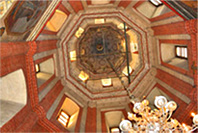
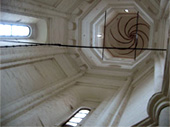
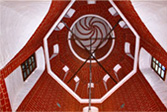
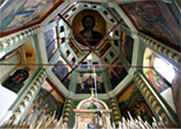
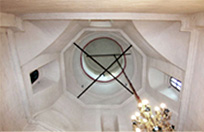
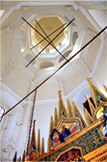
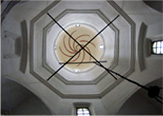
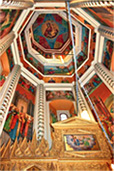
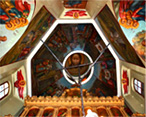

The Ten Churches
9. Saint Basil's Cathedral Over The Centuries
In this section I mention some events which seemed to me particularly significant and introduce some nice pictures of our Cathedral - inviting the readers wanting to learn the complex St. Basil history to consult the more specialized pages as wikipedia.org and www.saintbasil.ru for more details.
Among the most frequent events, especially in the early times, given the presence of many wooden parts, there were the fires: already in 1583, just twenty years after its foundation, the original Trinity Church burnt down and was refit by 1593. And soon they also began extensions and modifications to the building structure, or rather the complex of buildings: in 1588 was built the ninth sanctuary, dedicated to Basil Fool for Christ (1460s–1552), that was added next to the north-eastern sanctuary of the Three Patriarchs.
Around 1680 was carried out major structural change: what once was a group of nine independent churches on a common platform became a monolithic temple. Wooden shelters above the first-floor platform and stairs were rebuilt in brick, and the old belfry (detached from the churches) was demolished, and in its place was built the tall single tented roof belltower, giving to the whole a strong asymmetrical counterweight. In the same period appeared the first ornamental murals in the cathedral starting with floral ornaments inside the new galleries. But perhaps the most important change occurred in this period was the renewal of the colors, which began to assert itself both in the wall (with white and red patterns) and in the domes [as we read in Wikipedia: "The church acquired its present-day vivid colors in several stages from the 1680s to 1848"].
In 1737 the church was damaged by a massive fire and later restored. Around 1780 brick floors were replaced with white-stone ones, and the cathedral’s domes were further enlivened.
Saint Basil's Cathedral was able to cross unbroken - almost miraculously - wars and revolutions: in 1812 the Church was spared by the Fire of Moscow although the Napoleonic troops used it for stables and looted anything worth taking. Following the October Revolution, in 1923 St Basil's Cathedral became a public museum, though religious services continued until 1929. Later, and on several occasions, the Church threatened to be demolished, also due to so urbanist plans which involved the renovation of the Red Square - but fortunately he always managed to remain unscathed.
In the last century, then, were carried out three major comprehensive restoration and renovations, the first in the years 1921-1949, the second in 1954-1965, and the third in 1967-1969, during which the last for the first time in the cathedral’s history, worn-out iron roofing on its domes was replaced with copper roofing.
10. The Multicolored Fanciful Domes
As explained in a previous section of this article, the celebrated domes of St. Basil's Cathedral have often changed through the centuries shapes and colors.
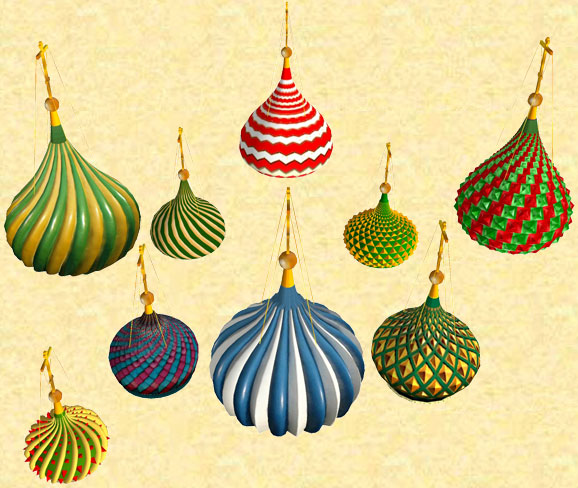
It can be stated that since the second half of the XVII century they have taken on the look and colors similar to those we see today - and this fact shall be authentic numerous color prints of the time.
"In 1967-1969, the cathedral's domes underwent capital restoration: in place of iron, were their metal frames covered with copper - a material is more durable and resistant that to inclement weather. When covered with iron, the domes had to be repaired each 10-12 years; now their new roofing has remained well-preserved to this day."
Tangible idea of the grandeur of this work of restoration can be made by considering the following numbers:
- 32 tons is the total weight of the copper used for the restoration
- 1 millimeter is the thickness of the copper sheets that cover the domes
- 1900 square meters is the raised surface of the reliefed and decorated domes
- 32 tons is the total weight of the copper used for the restoration
- 1 millimeter is the thickness of the copper sheets that cover the domes
- 1900 square meters is the raised surface of the reliefed and decorated domes
The bright multicoloredness of its fancifully shaped domes Makes the Cathedral of the Protecting Veil absolutely inimitable and raised easily recognizable all over the world. [www.saintbasil.ru]
 click on the images above for more information about domes at www.saintbasil.ru |
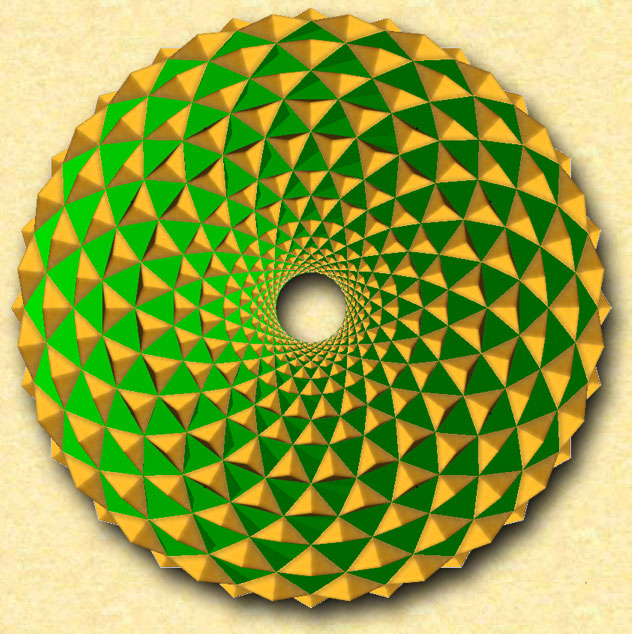
.
Comments:
<< Home
Un completo reportaje bien detallado, maquetado, y rico en imágenes. Esto es más que un sobresaliente Enrico¡
pg
pg
<< Home
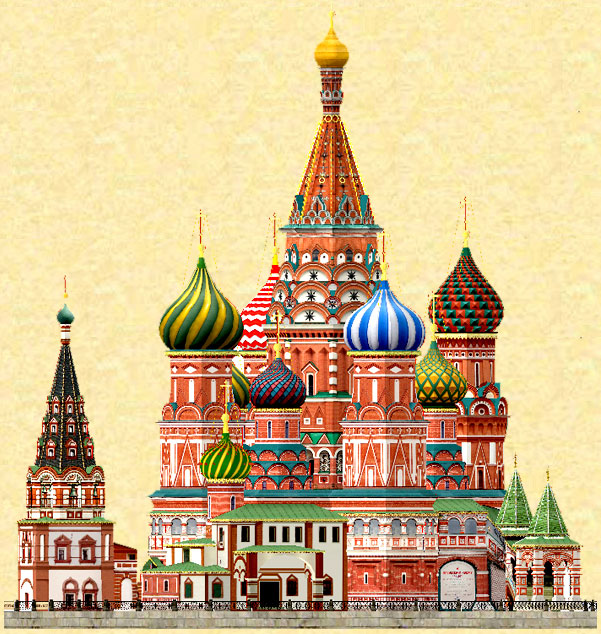
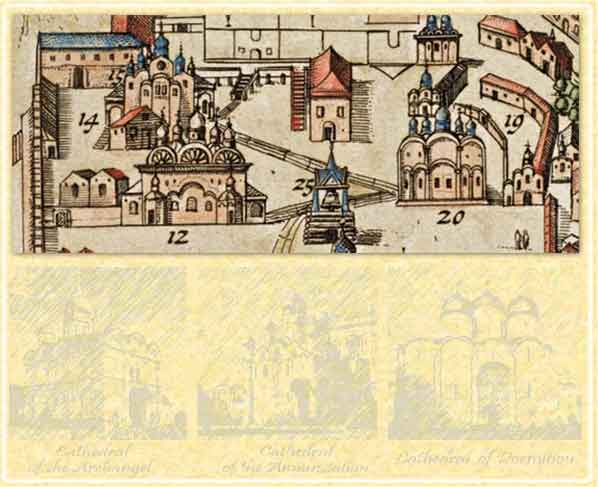
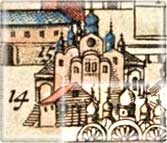
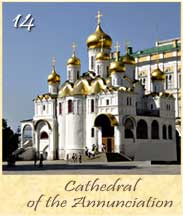
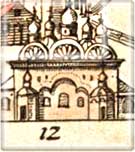
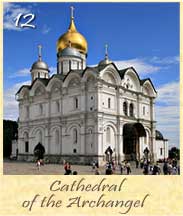
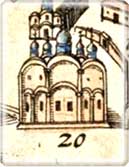
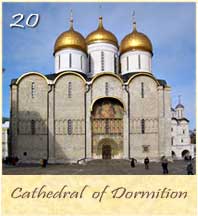
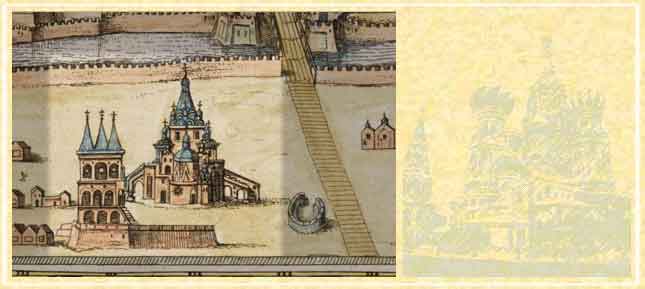
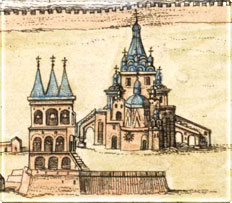
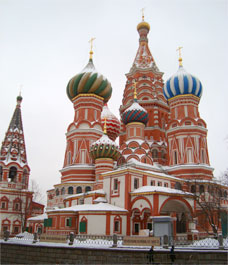
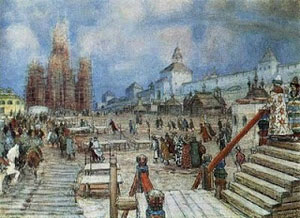
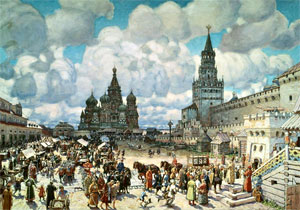
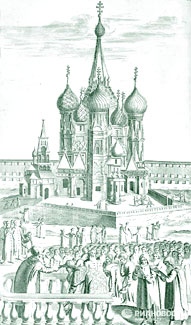
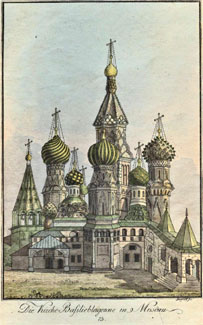
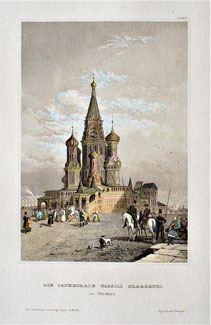
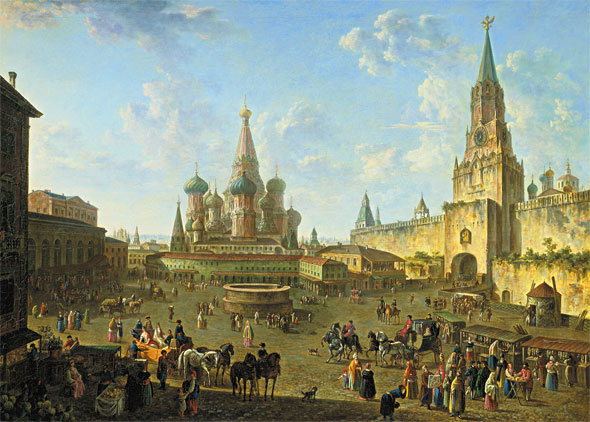



Post a Comment